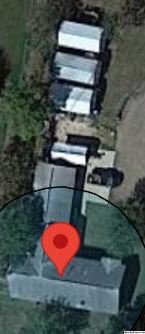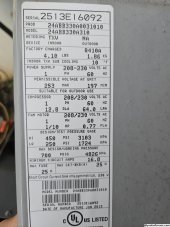I would love to see some pictures of the data panels on those Trane units.It's a train, 220v so its 2 20amp breakers. One for each phase
Yup its two 5 ton units, I know this because we are good friends with our HVAC guy. He helps us out when we have questions or problems. We have had to replace the Capacitor on the Condents are unit twice. That was something we could do ourselves. But we contacted him for troubleshooting and everything. And he told us what part to get and where it was and how to replace it. So I know for sure that each one is a 5 ton. The house is a L shape. So each unit handles separate zones. It's a total of 6 breakers between the 2 units. A twenty breaker for each of the air handlers. And 2 breakers for each of the outside condensers And they're 20 amps on each side. Mind you. These units are R22 refrigerant. And we checked the pressures whenever it gets too hot in case it's leaking. And we found that they're not leaking the pressures. Or within the correct range. It's just so hot here that they can't keep up. We've had it up to a 109 And that's not the heat index.
Also, pressure is only part of the formula to know if the system is low on refrigerant. To know exactly how the unit is functioning, I need accurate line temperatures and line pressures.
Both suction and liquid side.
Also, ambient temp, indoor temp, and wet bulb temp indoors.
A good cfm reading on the unit, and air temps before and after the coil make a perfect diagnostic set.







